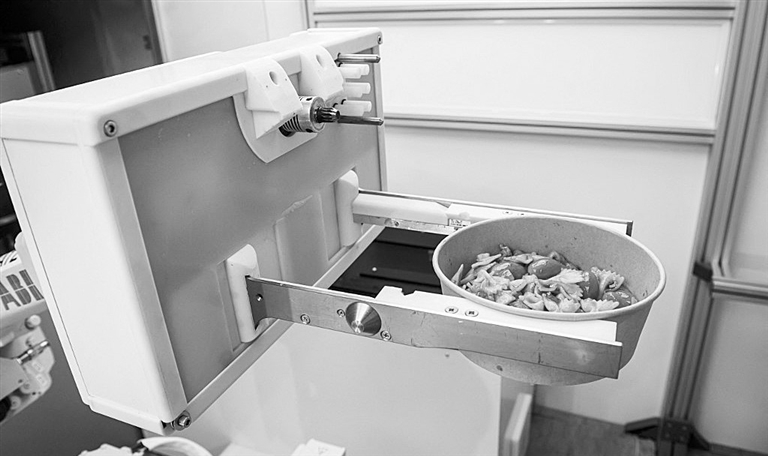
A PASTA order comes in and the robotic arm springs into action at the Roboeatz eatery in Riga, Latvia. After five minutes of gyrations, a piping hot plate is ready. The Riga cafe, located under a crumbling concrete bridge, is designed in such a way that customers can observe the robotic arm at work. It also has a seating area, although most customers prefer take away since vaccination certificates are required to be able to eat indoors in Latvia. A Roboeatz app allows customers to order and pay for their dish before picking it up at the cafe. “The food tasted better than I expected,” said customer Iveta Ratinika, a teacher and a member of the Latvian capital’s education board. Ratinika said she would encourage schoolchildren to come and observe the robotic arm in action and mused that there could be robots working at the school cafeteria within “a few years.” Roboeatz was set up in January 2018 by Konstantins Korcjomkins and Janis Poruks, who have been running the Woki Toki fast food chain in Latvia since 2009. “This robot replaces four to six human employees, reducing labor costs significantly,” said Poruks, who has a background in engineering. “On average in the European Union, one employee in the kitchen costs the company around US$19 an hour, which includes salary, taxes and insurance,” he said. But Poruks stressed that the introduction of such robots would not push up unemployment rates. “The robot will not replace people who are willing to becoming chefs. The robot will take those low-paid jobs,” he said. Automated kitchen technology has been gaining interest in recent years, and that has been accelerated by the pandemic. At a newly opened eatery in Paris, customers can watch robots build, bake and box up pizzas at a rate of up to 80 an hour. In the United States, a robot named “Sally” belonging to the startup Chowbotics can whip up salads sold through a vending machine. The designers of Roboeatz say it is designed to take over some of the food preparation tasks while improving food safety and eliminating the infection risks of crowded kitchens. Its creators say it can be programmed to make hundreds of recipes, taking into account diners’ favorites and food allergies. “The real challenge is to design and invent an entire kitchen around the robot, which should contain all the food ingredients, spices, sauces, rotating pots for boiling and frying,” said Korcjomkins. The company has big expansion plans with sales offices in North America and a technical team in Riga. “Hopefully a robot in kitchen will become as popular as electric cars,” said Korcjomkins. (SD-Agencies) | 
